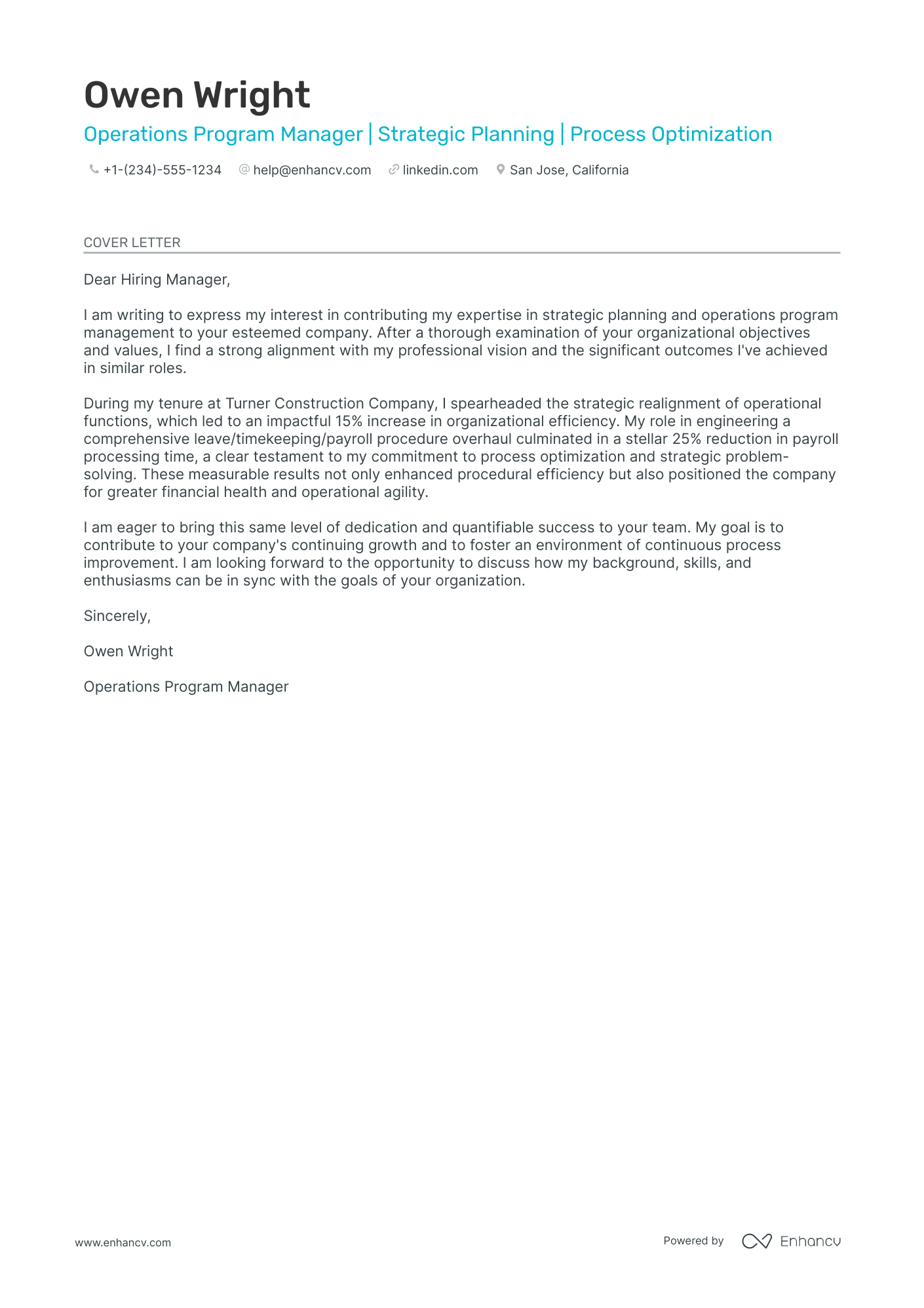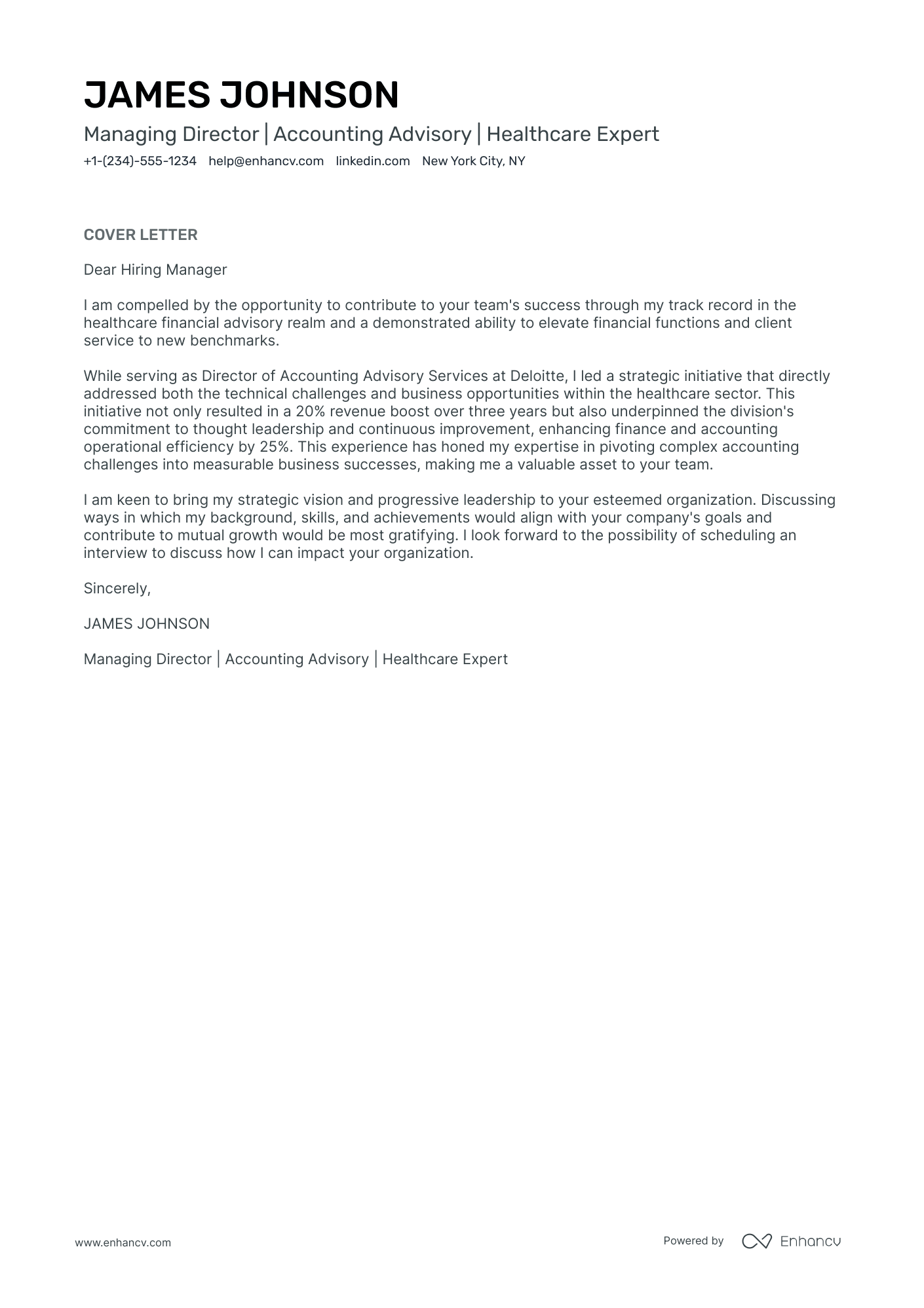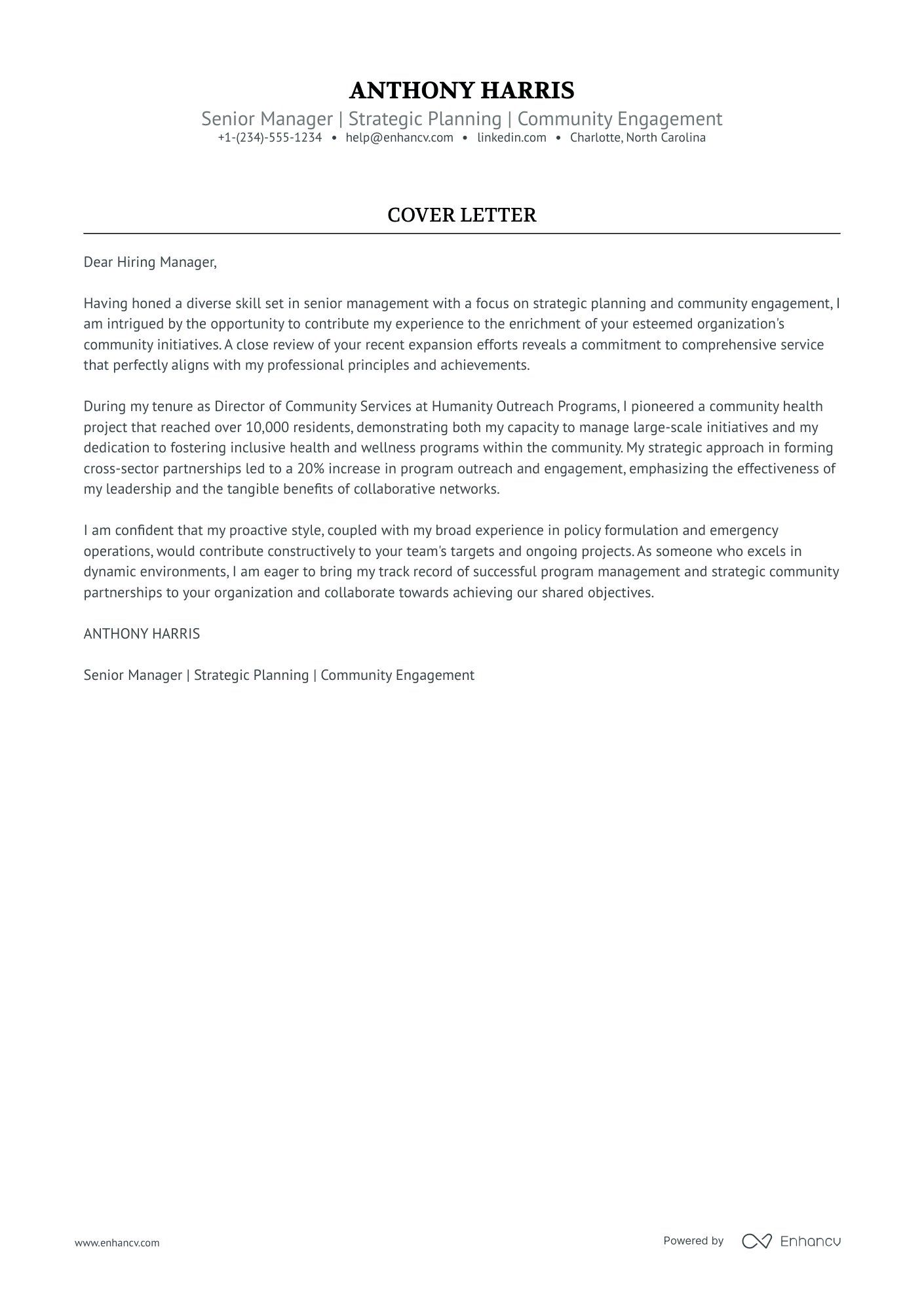Embarking on your quest for the ideal director role, you've likely encountered the pivotal step of crafting a compelling cover letter. This isn't just a formality; your cover letter is a chance to weave a narrative around your proudest professional triumph, distinguishing you from a stack of resumes. It requires a delicate balance—professional yet personal, detailed but concise. Avoid the trap of clichés and remember, brevity is key; your cover letter's impact must resonate within a single page. Let's guide you through creating a letter that captures your unique story.
- Personalize the greeting to address the recruiter and your introduction that fits the role;
- Follow good examples for individual roles and industries from job-winning cover letters;
- Decide on your most noteworthy achievement to stand out;
- Format, download, and submit your director cover letter, following the best HR practices.
Use the power of Enhancv's AI: drag and drop your director resume, which will swiftly be converted into your job-winning cover letter.
If the director isn't exactly the one you're looking for we have a plethora of cover letter examples for jobs like this one:
Drop your resume here or choose a file.
PDF & DOCX only. Max 2MB file size.
Director cover letter example
John Wilkins
Metropolis, MT
+1-(234)-555-1234
help@enhancv.com
- Demonstrating tangible achievements with quantifiable results, such as the "30% increase in annual revenue," is essential to establish credibility and show impact in a directorial role.
- Emphasizing leadership experience in "spearheading a cross-departmental initiative" highlights an ability to manage complex projects and collaborate across teams, a critical skill for a corporate director.
- Addressing the specific contributions one can bring to the company ("transformative results") and expressing enthusiasm for aligning with the company's goals shows both a forward-thinking mindset and an interest in the vision of the organization.
Five tips on formatting your director cover letter
Do you want to make a good impression on recruiters and, at the same time, follow the best industry advice on writing your director cover letter?
Make sure to include the following:
- Header and Salutation;
- Introductory paragraph;
- Body paragraph;
- Closing paragraph;
- Signature (this one is up to you).
Remember to use the same modern, simple font for your director cover letter as you did for your resume (e.g. Lato, Rubik, etc.)
Ensure your director cover letter is single-spaced and is wrapped around a one-inch margin, like in our cover letter templates.
Once completed, use our cover letter builder to export your director cover letter in the best format to keep your information intact - PDF.
At the end of the day, your director cover letter won't be assessed by the Applicant Tracker System (ATS) software, but by the recruiters. Your information should thus be legible, organized, and follow a structured logic.
Writing a cover letter can take time. Skip the hassle with our free cover letter generator and make one in seconds.
The top sections on a director cover letter
- Header: Includes your name, title, contact information, and the date, which is critical for establishing a professional presentation and clear identification.
- Opening Salutation: Addresses the hiring manager or committee by name if possible, setting a respectful and personalized tone for your application.
- Executive Summary: Outlines your leadership philosophy, significant achievements, and the value you'll bring to the organization, immediately drawing the reader's attention to your executive-level qualifications.
- Leadership and Vision: Highlights your experience in strategic planning, team leadership, and vision implementation, showing that you understand the responsibilities and expectations of a director role.
- Call to Action and Closing: Wraps up your letter with a professional closing statement and a proactive call to action, encouraging the recruiter or hiring manager to engage with you further.
Key qualities recruiters search for in a candidate’s cover letter
- Strategic Vision: Directors must set long-term goals and steer the company towards its future success, making it essential to showcase an ability to create and communicate a compelling vision.
- Leadership and Team Management: Illustrating your experience in leading teams, making tough decisions, and inspiring others is critical, as directors are responsible for guiding teams and influencing cross-department collaborations.
- Industry Expertise: Recruiters look for directors with deep knowledge and a proven track record in the relevant industry, as their expertise can drive innovation and performance.
- Financial Acumen: The ability to understand and oversee budgets, financial strategies, and profit margins is important for a director role, as they are often responsible for the financial health of their department or organization.
- Operational Efficiency: Presenting instances where you have optimized processes, increased productivity, or improved service delivery can be highly valuable, as directors are expected to ensure operational excellence.
- Problem-Solving Skills: Showcasing your capability to tackle complex challenges, navigate ambiguous situations, and implement effective solutions is crucial, as directors frequently handle high-stakes situations that affect the organization's success.
How to address hiring managers in your director cover letter greeting
Goodbye, "Dear Sir/Madam" or "To whom it may concern!"
The salutation of your director cover letter is how you kick off your professional communication with the hiring managers.
And you want it to start off a bit more personalized and tailored, to catch the recruiters' attention.
Take the time to find out who's recruiting for the role (via LinkedIn or the company page).
If you have previously chatted or emailed the hiring managers, address them on a first or last name basis.
The alternative is a "Dear HR team" or "Dear Hiring Manger", but remember that a "Dear Ms. Simmons" or "Dear Simon," could get you farther ahead than an impersonal greeting.
List of salutations you can use
- Dear [Hiring Manager's Name],
- Dear [Recipient's Title and Last Name],
- Dear Hiring Committee,
- Dear [Department] Team,
- Dear [Company Name] Recruiter,
- Esteemed [Title of the Recipient],
Your director cover letter introduction and the value you bring
Moving on from the "Dear Recruiter" to your professional introduction.
Use those first two sentences of your director cover letter to present the biggest asset you'd bring to the organization.
Don't go into too much detail about your achievement or the skill set, but instead - go straight for the win.
That is - what is your value as a professional?
Would you be able to build stronger, professional relationships in any type of communication? Or, potentially, integrate seamlessly into the team?
Structuring your director cover letter body to add more value
You've hinted at your value as a professional (this may be your passion for the job or interest in the company) in your introduction.
Next, it's time to pan out the body or middle of your director cover letter.
When creating your resume, you've probably gone over the advert a million times to select the most relevant skills.
Well, it's time to repeat this activity. Or just copy and paste your previous list of job-crucial requirements.
Then, select one of your past accomplishments, which is relevant and would impress hiring managers.
Write between three and six paragraphs to focus on the value your professional achievement would bring to your potential, new organization.
Tell a story around your success that ultimately shows off your real value as a professional.
Closing paragraph basics: choose between a promise and a call to action
You've done all the hard work - congratulations! You've almost reached the end of your director cover letter.
But how do you ensure recruiters, who have read your application this far, remember you?
Most director professionals end their cover letter with a promise - hinting at their potential and what they plan on achieving if they're hired.
Another option would be to include a call for follow-up, where you remind recruiters that you're very interested in the opportunity (and look forward to hearing from them, soon).
Choose to close your director cover letter in the way that best fits your personality.
Keep this in mind when writing your zero experience director cover letter
Even though you may not have any professional experience, your director cover letter should focus on your value.
As a candidate for the particular role, what sort of skills do you bring about? Perhaps you're an apt leader and communicator, or have the ability to analyze situations from different perspectives.
Select one key achievement from your life, outside work, and narrate a story that sells your abilities in the best light.
If you really can't think of any relevant success, you could also paint the picture of how you see your professional future developing in the next five years, as part of the company.
Key takeaways
Summarizing the most important aspects in writing your director cover letter, remember to:
- Create a personalized director cover letter for each role you apply for, that includes the recruiter's name in the salutation;
- Format your director cover letter with single-spacing, one-inch margins, and a modern, yet ATS-friendly font;
- Always start off your director cover letter with two sentences that reflect what is most important about your application;
- Your director cover letter body should feature your biggest accomplishments and the job-relevant skills it has taught you;
- Instead of opting for the "Sincerely yours" ending, close your director cover letter with a nod to the future with what you aim to achieve in this potential role.
Director cover letter examples
By Experience
Senior Director
By Role

















